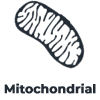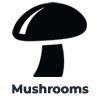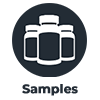One of the biggest limiting factors to our overall cognitive health is the physiological effects of elevated stress. Besides feeling "stressed," which can manifest itself as feelings of uncontrollable energy contrasted by paradoxical mental exhaustion, there is a lot going on in our bodies and brains when we are exposed to abnormal levels of stress. One of the main biochemical responses to stress is a rapid elevation in the levels of various stress hormones called corticosteroids. One of the most well known corticosteroids is cortisol which is produced by our adrenal cortex. Cortisol plays a role in a large variety of processes in our bodies, which under normal condition are very beneficial to our overall health. In fact, cortisol becomes elevated at certain points in the day. For example, cortisol is highly elevated in the mornings. Under normal circumstances, this will help us feel alert and motivated while also ramping up our metabolism. Cortisol levels drop later in the day, which will decrease alertness and make it easier to relax and go to sleep. Under elevated stress, these normal fluctuations in cortisol levels (which are collectively referred to as the diurnal cortisol curve) can become dis-regulated. This can manifest itself in a variety of different ways, such as a flat plateau, where cortisol levels increase in the morning and remain elevated. It can also completely flip around, resulting in low morning cortisol levels and high evening cortisol levels. In a real world interpretation, this may cause excessive stimulation during the day, excessive tiredness in the morning or excessive stimulation at night. Bare in mind, these are just the effects of disregulated cortisol that we can perceive. There is a whole lot more going on under the hood.
Elevated cortisol levels may have a negative effect on the cells contained in a part of our brains called the hippocampus. It is thought that a large portion of memory processing, especially the acquisition stage of memory, occurs in the hippocampus. Thus, it is no surprise that elevated cortisol levels in response to stress, can hamper memory function. Furthermore, elevated corticosteroid levels in response to stress can also significantly dampen our natural immune response. A combination of hampered cognitive and immune function can be very detrimental to productivity and can be a big blow to our general quality of life. So how do we minimize the physiological impact of stress in such a high stress world? One of the best options is identifying your main sources of stress and attempting to manage them on a behavioral level. However, sometimes this is not possible and we need a little extra help. Luckily, Ashwagandha has some powerful stress management benefits.
Withanolide A, one of the major bioactive molecules in Ashwagandha, has been reported to normalize elevated corticosteroid levels during elevated stress. Through this mechanism of action, Ashwagandha can help protect us from the potential negative effects of elevated cortisol levels. This mechanism of action, can also help support our memory, help promote overall cognitive function and help promote immune system strength.









